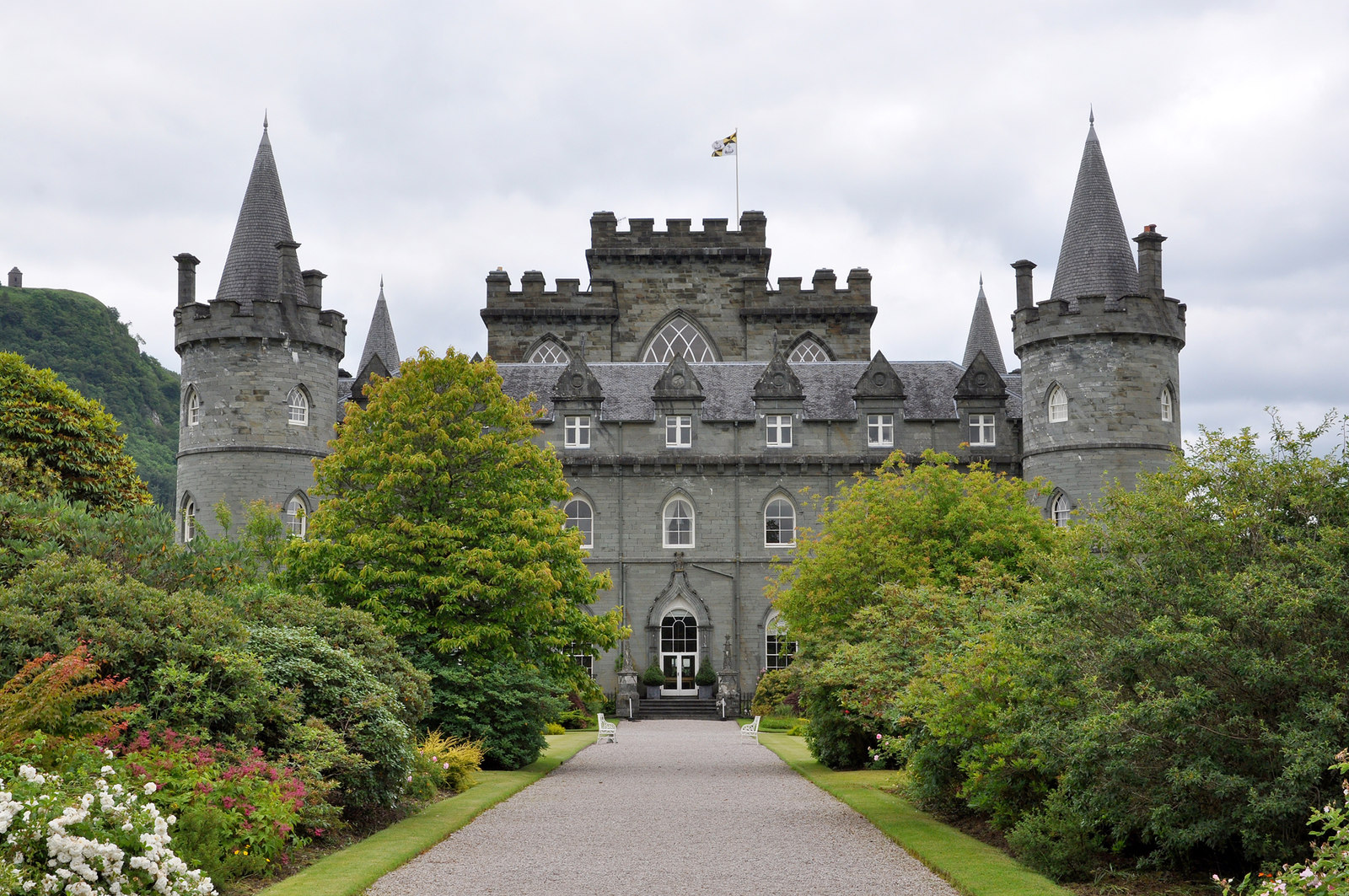The Legacy of the Campbell Clan: A Journey Through Scottish History and Culture
by Marcus Harris on Jan 24, 2024
Table of Content
1. Introduction
Scotland's tapestry of history is richly woven with the tales of its clans, and none quite as prominently as the Campbell clan. Originating from the ancient Britons of Strathclyde, their story is not just a lineage tale but a journey through Scotland's tumultuous and vibrant past.
The Campbell family's influence stretches far beyond the boundaries of genealogy, intertwining with significant historical events that have shaped the very fabric of Scottish history. Their legacy, marked by battles, alliances, and cultural significance, offers a unique lens through which we can view and understand the broader narrative of Scotland itself.
2. Origins and History
The roots of the Campbell family lie deep in the mists of Scottish history. Their story begins in the ancient kingdom of Strathclyde, where the earliest known ancestor, Gillespie, emerges in historical records around 1263. This era was characterized by the intermingling of Celtic and early Scottish cultures, setting the stage for a lineage that would become pivotal in Scotland's history.
The Campbells' rise to prominence was not without its trials and tribulations. They found themselves intricately involved in the Wars of Scottish Independence, staunchly supporting Robert the Bruce. This allegiance was not only a testament to their strategic acumen but also a significant factor in their acquisition of lands and titles, bolstering their status among Scottish nobility. As their power grew, so did their influence, extending from Edinburgh to the Hebrides, marking the Campbells as one of the most formidable families in Scottish history.
3. Campbell Clan Crest and Motto

Gaelic Name: Caimbeul
Crest: On a boar’s head erased fessways erased Or, armed Argent, langued Gules
Motto: Ne Obliviscaris (Do not forget)
Origin of Name: Gaelic, Caimbeul from ‘Cam’ (wry) and ‘Beul’ (mouth)
Badge: Bog Myrtle
Lands: Argyll
Clan Chief: His Grace the Duke of Argyll, the 13th Duke
The Campbell family crest is a visual representation of their history, values, and achievements. At the heart of the crest is the iconic Campbell boar's head, a powerful symbol that has stood the test of time. The boar, with its sturdy tusks and formidable presence, signifies strength, courage, and tenacity – qualities that have undoubtedly defined the Campbell lineage through generations.
Symbolism Behind the Boar:
Strength and Power: The boar, often associated with strength, embodies the enduring power of the Campbell family. Its presence on the crest reflects the family's ability to overcome challenges and emerge victorious in the face of adversity.
Courage and Tenacity: The boar's tenacious nature is a nod to the Campbell spirit. Throughout history, the family has displayed unwavering courage in the pursuit of their goals, be it in the realms of politics, military endeavors, or cultural contributions.
Protection and Loyalty: In heraldry, the boar is also a symbol of protection and loyalty. The Campbell family crest, with the boar at its helm, signifies the commitment to safeguarding their own and standing loyal to their allies.
Variations and Regional Differences in Campbell Family Crests
The Campbell Family Crest exhibits regional variations that reflect the unique heritage of each branch. While the boar's head is a common element, different branches may feature distinct mottos, symbols, and colors. These variations highlight local influences and the diverse identities within the Campbell clan.



4. Tracing the Campbell Territories Across Scotland and Beyond
The Campbell clan's ancestral lands form a captivating narrative that unfolds across the breathtaking landscapes of Scotland. While Argyll stands as the heartland of the Campbells, their territorial influence is a mosaic that extends its reach into various corners of the Scottish realm. In Argyll, the Campbell presence is not merely a geographical fact but a historical saga etched into the hills and glens.
Venturing beyond Argyll, Campbell lands weave a complex tapestry, reaching into the historic regions of Angus, where verdant fields and ancient castles bear witness to the clan's enduring legacy. With its rugged coastline and rolling hills, Ayrshire also bears the mark of Campbell's influence, showcasing the family's connection to the diverse Scottish terrain.
Moray, with its lush landscapes and historical significance, further reflects the widespread reach of Campbell territories. The expanse of Perthshire, known for its picturesque landscapes and majestic rivers, is yet another canvas where the Campbell name is painted in tales of resilience and prosperity.
Remarkably, the Campbell influence transcends national borders, leaving an indelible mark on Northumberland. The presence of Campbell lands in Northumberland serves as a testament to the clan's historical interactions and strategic alliances that extended beyond the confines of Scotland.

5. Prominent Branches of the Campbell Clan: Exploring the Legacy of Ten Distinguished Lineages
Campbell of Argyll: The main and most distinguished branch, historically holding the title of Duke of Argyll. They played a crucial role in Scottish history and politics.
Campbell of Breadalbane and Holland: This branch has historical ties to Breadalbane in the central Highlands of Scotland. It also reflects connections to Holland.
Campbell of Cawdor: Associated with Cawdor Castle in Nairnshire, this branch is well-known, and the head of this family holds the title Thane of Cawdor.
Campbell of Glenorchy: A significant branch with strong historical connections to the Glenorchy area.
Campbell of Loudoun: This branch has historical ties to the region of Ayrshire and has played important roles in various periods.
Campbell of Inverawe: Known for their association with Inverawe House in Argyll, this branch has a distinct history.
Campbell of Strachur: A notable branch associated with the area of Strachur in Argyll.
Campbell of Skipness: This branch has historical connections to the Skipness Castle and the surrounding area.
Campbell of Auchinbreck: This branch has historical significance, and Auchinbreck Castle in Argyll was associated with them.
Campbell of Glen Lyon: A branch with historical ties to the Glen Lyon area in Scotland.
6. Famous Figures in the Campbell Family
The annals of the Campbell family are adorned with figures who have left indelible marks on Scottish history. Among them, five stand out for their extraordinary contributions:
- Sir Colin Campbell (1st Earl of Argyll): A central figure in the 15th century, pivotal in the clan's rise to power. His strategic alliances and leadership were instrumental in shaping the political landscape of Scotland.
- Sir Neil Campbell: Renowned for his unwavering loyalty to Robert the Bruce, his marriage into the Bruce family signified the intertwining of two of Scotland's most influential lineages.
- Duncan Campbell (1st Lord Campbell): His political savvy in the 15th century further solidified the family's status, navigating the complex dynamics of Scottish nobility with skill.
- Archibald Campbell (4th Earl of Argyll): Ennobled in the 16th century, he played a significant role in consolidating the Campbell influence, contributing to the cultural and political development of the Highlands.
- Lady Marjorie Stewart: Through her marriage to Sir Duncan Campbell, she connected the Campbells to the royal bloodline of Robert the Bruce, intertwining the family's fate with the destiny of Scotland itself.
Each of these figures not only shaped their family's history but also contributed to the tapestry of Scotland's national identity.

7. Cultural Heritage and Traditions
7.1 Cultural Background of the Campbell Family
The Campbell family's cultural heritage is a vivid tapestry of Scottish traditions. Rooted in the rich soil of the Highlands, their customs and practices reflect the essence of Scottish culture. From the vibrant patterns of their campbell tartans to the spirited competitions of the Highland games, each tradition carries the weight of history and the warmth of centuries-old customs.
7.2 Unique Ceremonies and Traditions
The Campbell family has preserved a wealth of unique ceremonies and traditions that celebrate their Scottish heritage. These include traditional clan gatherings, where stories and histories are passed down through generations, and participation in cultural events that showcase their deep connection to the land and its history. These practices not only honor their ancestors but also serve as a bridge connecting the past with the present, ensuring that their rich cultural legacy continues to thrive.
8. The Campbell Clan's Role in Scottish Politics and Conflicts
The Campbells were not just spectators in Scottish history; they played a pivotal role in shaping the political landscape of their time. Their involvement in key historical events, from the Wars of Scottish Independence to the Jacobite uprisings, demonstrates their strategic significance and political acumen.
8.1 Involvement in Scottish Independence Wars
The Campbells were staunch supporters of Scottish independence, aligning themselves with figures like Robert the Bruce. Their participation in battles such as Bannockburn (1314) was crucial in asserting Scotland’s autonomy from England. This allegiance, however, also led to rivalries with other clans, notably the MacDonalds, setting the stage for ongoing clan feuds.
8.2 The Campbells and the Jacobite Risings
During the 17th and 18th centuries, the Campbells were known for their opposition to the Jacobite cause, which sought to restore the Stuart monarchy. Their loyalty to the British Crown during these tumultuous times further entrenched their power but also deepened divisions within Scotland, as they often found themselves at odds with other Highland clans.

9. The Campbell Estates and Architectural Contributions
The Campbell family’s influence is also evident in their architectural legacy. They built and resided in some of Scotland’s most iconic castles and estates, many of which stand today as testaments to their power and taste.
9.1 Notable Campbell Castles
- Inveraray Castle: A classic example of 18th-century Gothic Revival architecture, Inveraray Castle is the ancestral home of the Duke of Argyll, chief of Clan Campbell.
- Kilchurn Castle: Originally built in the mid-15th century, this castle on the banks of Loch Awe symbolizes the Campbells’ medieval strength.
- Cawdor Castle: Although often associated with the Campbells, Cawdor Castle is historically linked with the Thanes of Cawdor. However, its history is intertwined with the Campbells through marriage and inheritance.

9.2 Impact on Landscape and Architecture
The Campbell family’s architectural endeavors significantly influenced Scottish landscape architecture. Their castles and estates, often set in strategic and picturesque locations, reflect a blend of military necessity and aesthetic appeal, contributing to Scotland’s reputation for dramatic and historic landscapes.
10. Conclusion
Explore the timeless traditions of Campbell Clan through our collection of tartan products on our website. And bring a piece of the clan's history into your present.
Frequently Asked Questions
Who were the earliest known ancestors of the Campbell family?
The Campbell family traces its roots back to Gillespie, who emerges in historical records around 1263 in the ancient kingdom of Strathclyde.
How did the Campbells expand their territories beyond Edinburgh?
The Campbells extended their influence from Edinburgh to the Hebrides, solidifying their status as one of the most formidable families in Scottish history.
Are there any controversies associated with the Campbell family?
Like many prominent families, the Campbells faced controversies and rivalries, notably with clans such as the MacDonalds, adding complexity to their historical narrative.
How did the marriage of Lady Marjorie Stewart impact the Campbell family's legacy?
Lady Marjorie Stewart's marriage to Sir Duncan Campbell connected the Campbells to the royal bloodline of Robert the Bruce, intertwining their family's fate with the destiny of Scotland itself.
What were the Campbells' roles during the Jacobite uprisings?
During the 17th and 18th centuries, the Campbells opposed the Jacobite cause, showcasing their loyalty to the British Crown and deepening divisions within Scotland.
How did the Campbells navigate the complex dynamics of Scottish nobility in the 15th century?
Figures like Duncan Campbell (1st Lord Campbell) demonstrated political savvy, solidifying the family's status by navigating the intricate relationships within Scottish nobility.












